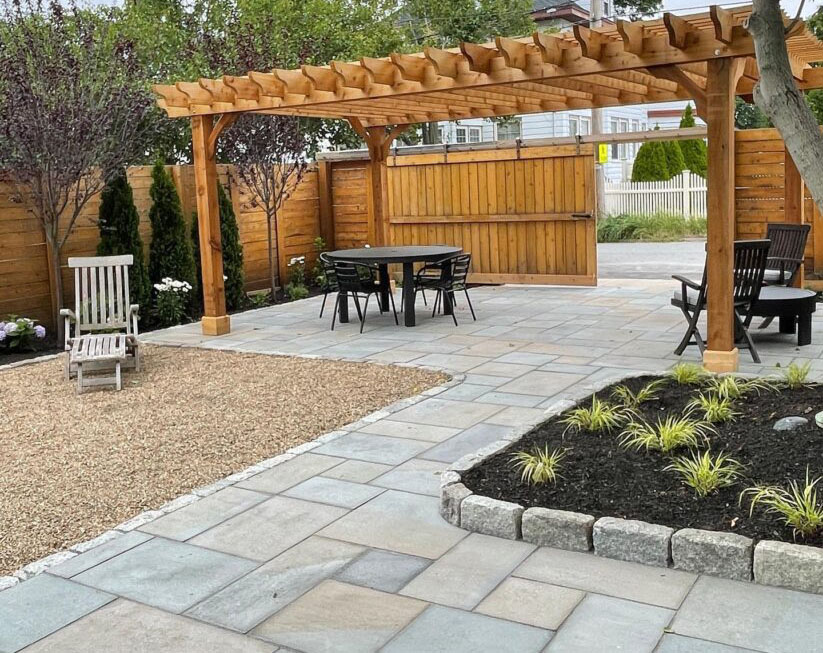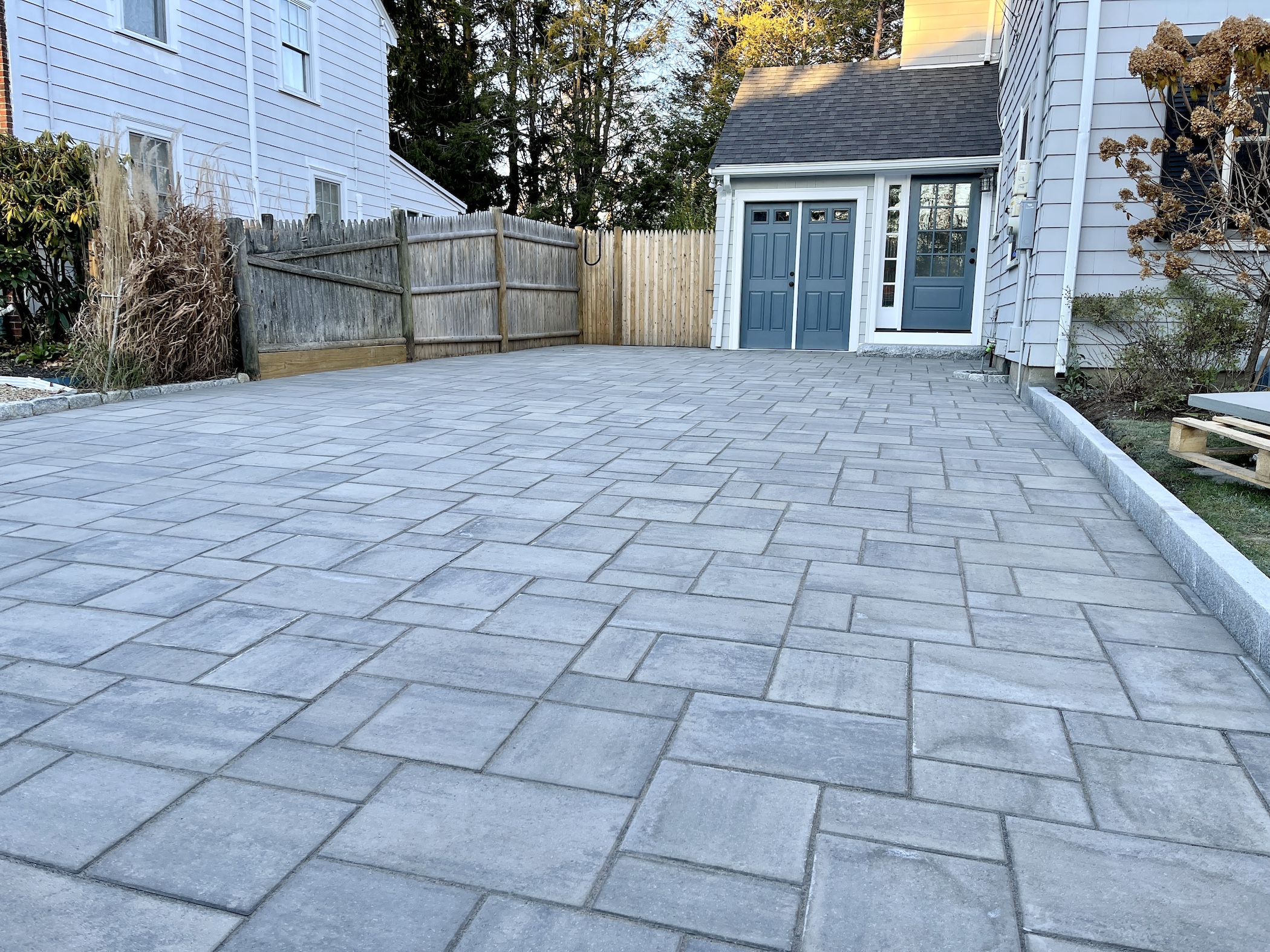
Masonry plays a significant role in sustainable hardscaping, providing durability, functionality, and aesthetic appeal to outdoor spaces. As sustainability becomes a growing concern, homeowners and contractors in the Northeastern United States are seeking eco-friendly materials and construction methods for masonry projects. By selecting sustainable materials, reducing waste, and incorporating environmentally responsible building techniques, hardscaping can be both beautiful and beneficial to the environment.
The Importance of Sustainable Hardscaping
Traditional hardscaping materials can have a substantial environmental impact due to resource extraction, high energy consumption during production, and the potential for waste. In the Northeast, where climate fluctuations can affect outdoor surfaces, it is essential to choose materials that balance longevity with eco-friendliness. Sustainable hardscaping practices help:
- Reduce carbon footprint
- Minimize waste and resource depletion
- Improve stormwater management
- Enhance biodiversity in the landscape
By focusing on sustainability, homeowners in Massachusetts and beyond can create outdoor spaces that are both environmentally responsible and long-lasting.
Eco-Friendly Masonry Materials
Choosing the right materials is one of the most crucial steps in creating a sustainable hardscape. Several eco-friendly masonry options are well-suited for the Northeastern climate and can withstand the region’s freeze-thaw cycles while maintaining their integrity.
1. Reclaimed and Recycled Stone
Using reclaimed stone from old buildings, walls, or roads reduces the need for new quarrying, preserving natural landscapes. Reclaimed stone is often more durable than newly quarried material and blends seamlessly with the historic architecture commonly found in Massachusetts.
2. Permeable Pavers
Permeable pavers allow water to seep through the surface rather than running off, reducing erosion and improving groundwater recharge. In states like Massachusetts and New York, where heavy rainfall and snowmelt contribute to runoff issues, permeable pavers help manage stormwater effectively.
3. Locally Sourced Masonry Materials
Transporting materials over long distances increases carbon emissions. Homeowners in the Northeast should look for locally sourced options such as New England fieldstone, granite from Vermont, or bluestone from Pennsylvania. These materials not only reduce transportation emissions but also harmonize with the natural landscape.
4. Recycled Concrete and Brick
Recycled concrete and brick are excellent alternatives to new materials, repurposing waste from demolished structures into new hardscaping features. These materials are durable and help reduce landfill waste.
Eco-Friendly Construction Techniques
Beyond material selection, sustainable construction practices help minimize environmental impact and enhance the longevity of masonry structures.
1. Dry-Stack Masonry
Dry-stacked stone walls, common in Massachusetts landscapes, require no mortar, allowing for natural drainage and reducing material use. This technique is ideal for retaining walls and decorative garden features.
2. Low-Carbon Cement Alternatives
Traditional cement production is highly energy-intensive. Using alternatives like fly ash, slag cement, or lime-based mortars can lower carbon emissions while maintaining structural integrity.
3. Efficient Site Planning
Designing hardscaping features with sustainability in mind can prevent unnecessary material use and waste. For example, integrating masonry pathways with natural topography reduces the need for excessive excavation.
4. Water-Conscious Installation
Using water-efficient techniques, such as collecting rainwater for mixing cement or wetting down materials, helps conserve resources and prevent unnecessary waste.
Stormwater Management in the Northeast
Managing stormwater effectively is crucial in the Northeast, where heavy rain and snowmelt can lead to flooding and erosion. Sustainable hardscaping solutions that address stormwater management include:
- Permeable paver driveways and patios to reduce runoff
- Rain gardens integrated with masonry features to absorb excess water
- Gravel or crushed stone pathways to promote natural infiltration
In coastal areas like Cape Cod, stormwater management is particularly important due to the risk of erosion. By incorporating permeable surfaces and proper drainage techniques, homeowners can protect both their hardscaping and the surrounding environment.
Massachusetts: A Leader in Sustainable Hardscaping
Massachusetts has been at the forefront of sustainable building practices, with many homeowners and contractors embracing eco-friendly hardscaping solutions. The state’s emphasis on environmental conservation makes it an ideal place to implement green masonry projects. Several factors unique to Massachusetts should be considered when designing sustainable outdoor spaces:
- Historic Preservation: Many properties feature historic stone walls and pathways that can be restored rather than replaced, preserving character and reducing waste.
- Coastal Erosion Control: In coastal towns such as Gloucester and Plymouth, using durable, salt-resistant materials like granite can prevent deterioration from ocean exposure.
- Urban Sustainability: Cities like Boston encourage green infrastructure, including porous pavement and rain-absorbing hardscapes, to mitigate urban runoff issues.
Sustainable Hardscaping for New England Winters
The freeze-thaw cycle in New England can cause masonry materials to crack or shift over time. Sustainable hardscaping solutions should be designed to withstand these seasonal changes while minimizing environmental impact. Recommended practices include:
- Using frost-resistant stone like granite and bluestone
- Installing proper drainage layers to prevent water buildup and freeze damage
- Avoiding chemical deicers that can degrade masonry and harm the environment, opting for sand or calcium magnesium acetate instead
Maintenance Tips for Sustainable Masonry
Proper maintenance extends the lifespan of masonry hardscaping, reducing the need for replacements and conserving resources. Sustainable upkeep practices include:
- Regular inspections to identify cracks or shifting stones before they worsen
- Cleaning with eco-friendly solutions rather than harsh chemicals
- Repointing mortar with sustainable materials to extend the life of brick or stone walls
Conclusion
Masonry remains a cornerstone of sustainable hardscaping, offering durability and aesthetic appeal. By prioritizing sustainable materials and eco-friendly construction methods, homeowners in the Northeastern U.S.—especially in Massachusetts—can create hardscapes that are both functional and environmentally responsible. Whether using reclaimed stone, permeable pavers, or dry-stack techniques, embracing sustainable practices ensures that hardscaping projects will not only withstand the region’s climate but also contribute positively to the environment.




